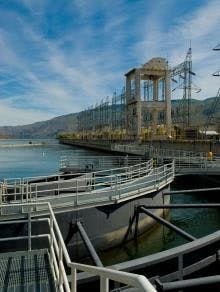Whether you’re an early adopter enjoying the ride or a laggard who has yet to get on board,
GE Power's Rich Carpenter
the digital transformation of industry continues to expand and evolve. Rich Carpenter, GE Power’s general manager of control platforms, knows this as well as anybody, having recently been involved in revamping GE’s motion-product line to deliver a wider breadth of solutions to its customer base. We chatted with Rich to learn more…
Smart Industry: How is the breadth of digital-transformation applications widening?
Rich: There are several drivers, within GE and with other OEMs. Customers expect us to deliver uptime, performance. We use digital infrastructure to remotely connect to equipment, run advanced predictive-maintenance diagnostics, note changes in performance that will lead to failures down the road, etc.
OEMs are expected to provide service to the machines they sell; service is becoming more of a role. Meanwhile, manufacturers are transitioning to external OEMs as they lose experienced employees. They are getting more benefits from operating equipment this way.
The traditional approach was to arrive at 8 am and turn on the pump. The new approach is having the IIoT talk to the cloud, see the power prices and change the run times to get a 3% savings in in energy. They are seeing substantial savings based on those decisions.
Smart Industry: What’s new with control systems?
Rich: We are seeing changes at play with control systems. They still have to control equipment and operate reliably and safely, but the IIoT has changed the way we look at control systems. Example: a PLC is an IIoT device. There is a lot of talk about cloud and edge…the industry is still defining what that will look like. From our perspective it is clear—there is enormous power coming to the edge—there are more processors on board, more processing power.
Smart Industry: What industries are we talking about?
People are taking products like PLCs with open Linux operating systems, then adding virtual-reality features. There is a lot of creativity happening in this space right now.
Smart Industry: Are teams ready to adopt these new tools?
Rich: As this becomes mainstream, equipment will have built-in IIoT. Example: we have an application focused on a control systems help checker, which uses an IIoT infrastructure to send data to external cloud environments. It gives you a nice report on 300 controllers at the site. You don’t have to be an IIoT expert; you just have to turn it on. Big companies want to have data science/analytics teams in place, but the typical facility might not be ready for that. They just want to make decisions on their iPhone.
Smart Industry: Are you taking a new approach to cybersecurity in relation to modern network architectures?
Rich: We have had to completely rethink cybersecurity. The assumption was that as long as you were protecting the network, the equipment on that network was safe. We concluded that was not enough. Most attacks are from within, not necessarily on purpose, but perhaps a stick with virus on it got into the network. With our latest round of controllers we had to rethink cybersecurity from the ground up. It starts at the supply chain—boxes coming from trusted sources—and then every step being verified along the process. We will abort a process if security has been compromised. That is the cost of entry today. In some market segments where we win an unfair market share, they recognize that we bring that level of risk-reduction to the plant. We would never dare the bad guys, but we have a good solution in place.






